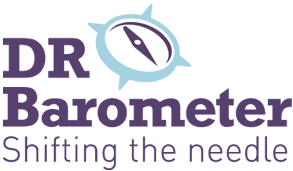October 10th marked not only World Sight Day 2019, but also the release of the WHO’s first ever World Report on Vision. While the report states that over 2.2 billion people around the world are currently suffering from some form of blindness (either complete or partial) the alarming fact is that without clear action this number is only expected to increase with the projections of population ageing.
Given the trends and unequivocal evidence that early screening saves vision, it is difficult to understand why vision health has failed to capture the attention within the field of public health. While vision impairment is not life threatening, the impact on functional ability is immense. In a recent article entitled “Making Avoidable Blindness a Thing of the Past”, many of the clinical and technological advances developed to address vision impairment are explored.
These advances, while encouraging are only part of the solution. As illustrated by the DR Barometer Study, a comprehensive, two-phase, multi-country study which shone a spotlight on the status of prevention, assessment and treatment of diabetic eye disease (DED), poor awareness continues to be a significant barrier for screening and treatment.
This lack of awareness is especially troubling as the increase in type-2 diabetes globally is associated with a rise in the rate of diabetic retinopathy, one of the leading causes of preventable blindness. Significant effort needs to be employed not only in the development of innovative new technologies, but in supporting patient education and empowerment and increasing the efforts around coordinated care for individuals living with diabetes.
“While new technology is part of the solution to eliminating avoidable blindness, it won’t be the single solution,” Dr Andy Cassels-Brown, Medical Director, Fred Hollows Foundation
Diabetic Retinopathy, while undoubtedly only one piece of this complex puzzle, has been identified by the WHO as one of the main causes driving the increased rates of vision impairment around the globe. This together with late detection, another key factor identified by the WHO and by the DR Barometer Study, makes diabetic retinopathy one of the most significant threats to vision health today. To learn more about Diabetic retinopathy Join the DR Barometer Community today.


